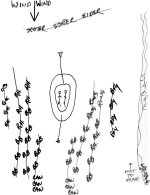Steve Cozzetto
New member
I have two Dozen Can deks. What other should I mix them with for maximum effectiveness?
I have two Dozen Can deks. What other should I mix them with for maximum effectiveness?

Where can I send the check for your lesson? Thank you. I use Long lines from Decoy Rig company so I just need to put the spread together like you show.
Info like that will bring me way down the learning curve.
Steve
